5 Classroom Practices to Boost Language
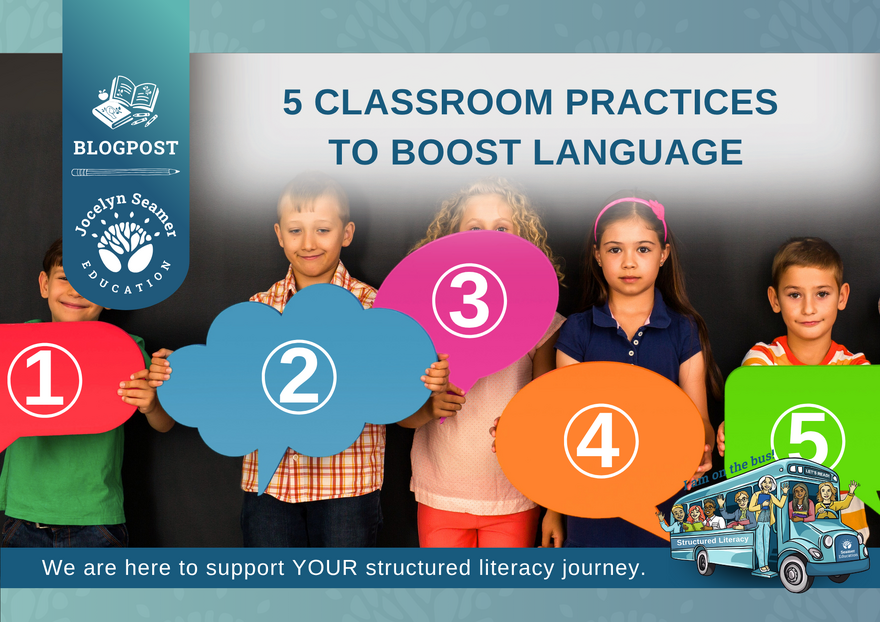
Oral language is at the heart of all academic learning. After all, If you can’t say it, you can’t read it and you can’t write it. As teachers, we know this to be true, but often struggle to understand exactly what we are supposed to do to make it happen. So, here is a handy list of things to take into consideration when planning for oral language teaching in your classroom:
- Make your classroom a language rich environment where discussion and use of complex vocabulary is the norm. Don’t dumb down the language that you use. Point out interesting words and engage children in conversation about language. Get into the habit of using and talking about words. It matters.
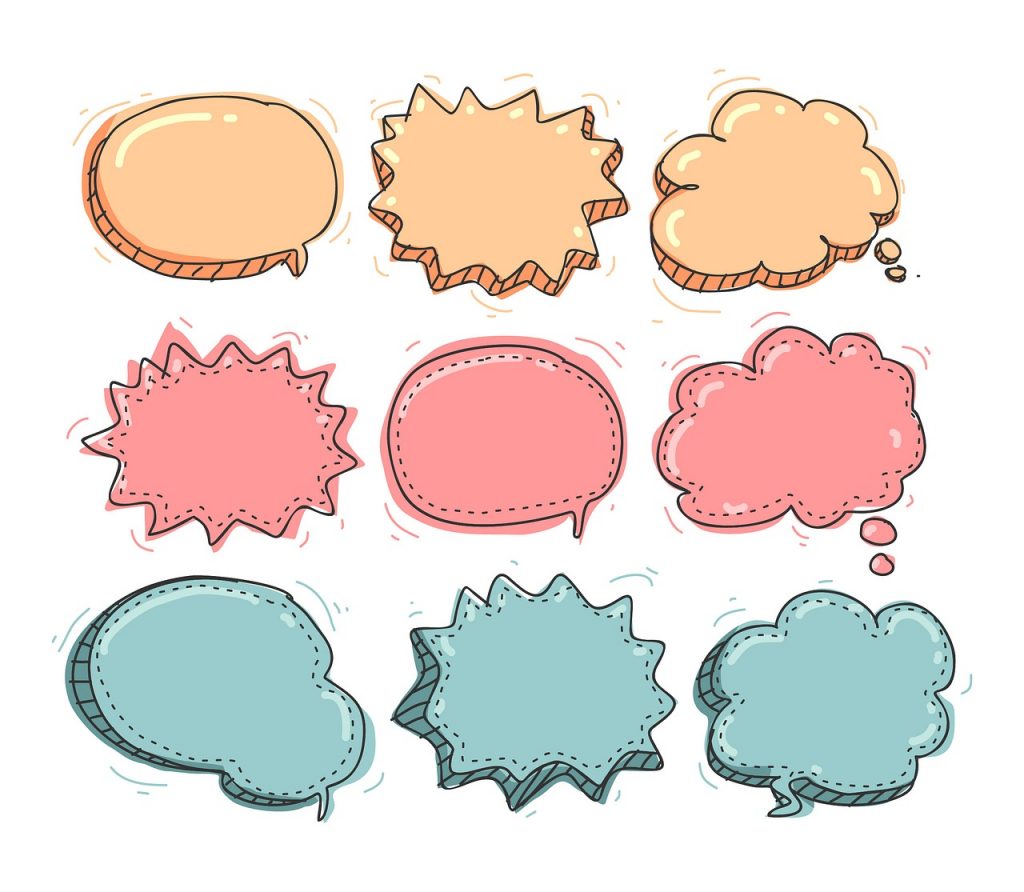
2. Provide the opportunity for children to talk. Not just ‘chat’ in play and break times, but to discuss learning with another child. These experiences need to be scaffolded and supported. An easy structure that you can implement is Talk to Your Partner or Partner Talk. When you want to reinforce a point for children, ask them to ‘talk to your partner’ and then let them do just that.
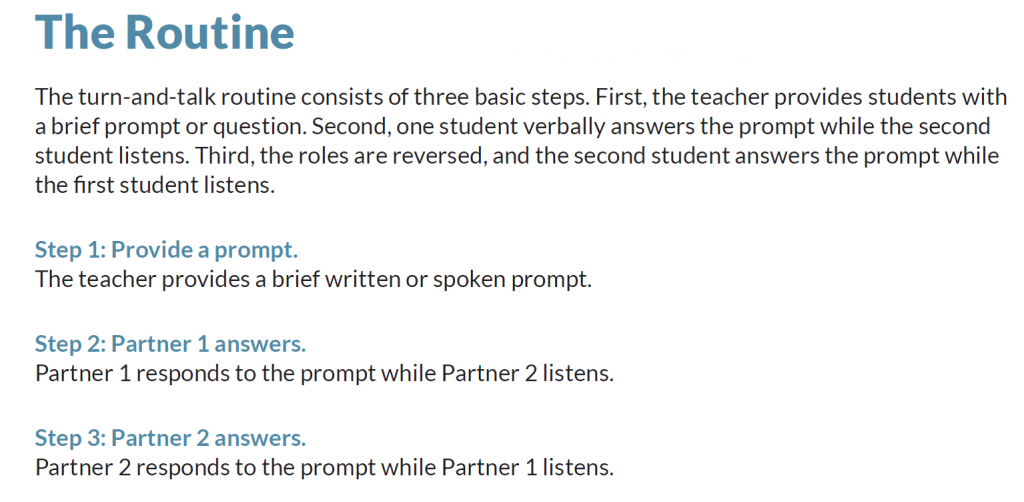
3. Make use of ‘teachable moments’ to provide language support and extension at the student’s point of engagement. While we do need to have an intentional focus for student language learning, we also need to meet students where they are up and work with them. Essentially this means providing responses to a student’s speech that acknowledges the validity of their communication and provides modelling to extend their words.
e.g. Student – “Miss, Miss. Look at them fish!”
Teacher – “Wow, those fish are really pretty!”
Student – “Me and my dad catched heaps on the weekend”
Teacher – “That sounds like a lot of fun, catching a big haul of fish. Who caught the biggest fish?”
4. Use the explicit teaching model to plan for student learning.
Interactions like the one above serve two purposes. Firstly they validate the importance of the student’s communication and give you an opportunity to informally model more grammatically developed speech. The second purpose of these interactions is to provide you with the information about where to direct your explicit teaching. Explicit teaching gives the scaffolding and support to enable children to confidently develop their skills.
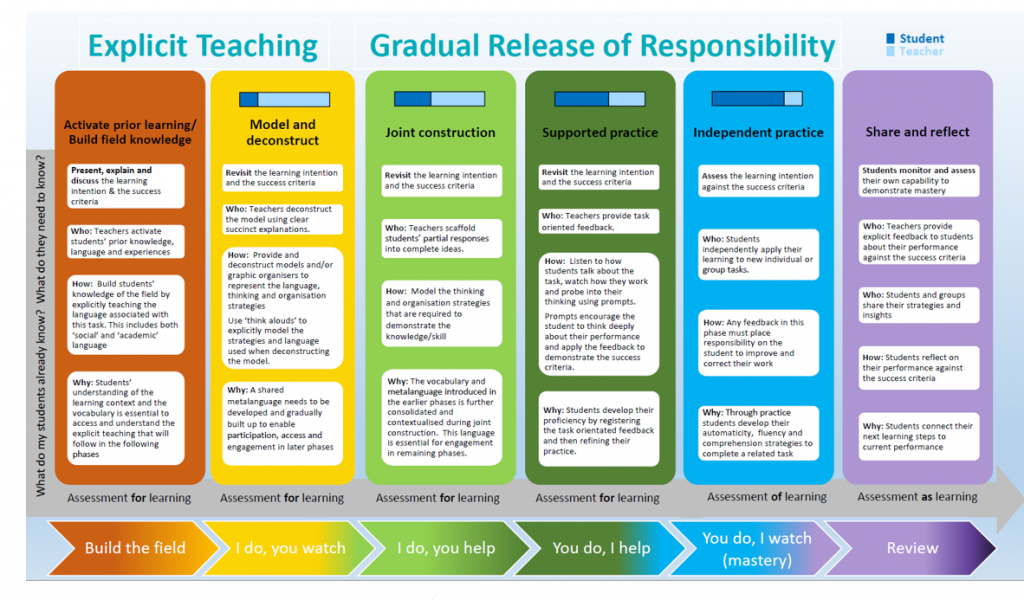
What this model looks like in practice:
Build the field – read stories, watch video clips, provide real objects and engage children in drama.
Model and deconstruct – explicitly teach the vocabulary.
Joint construction – provide a task prompt and have student talk with their partners and then feedback back to the group.
Supported practice – ‘guided speaking’ is a great way to re-purpose levelled texts, particularly non-fiction texts. Cover or chop off the words in the texts and use the books to scaffold talking opportunities using the language you are focusing on. It is necessary to provide many different opportunities to use the target language throughout the day in different contexts.
Independent practice – this might take the form of writing (if students have the transcription skills) or story telling, recording language on a computer or iPad.
Share and Reflect – Provide feedback to students and ask students to reflect on their new learning.
5. Use pictures books as the model for desired language structures and functions.
Picture books, even for older students are a terrific source of language modelling. It has been identified that picture books provide more complex words both in quantity and type than children’s speech alone. Indeed, pictures have been found to contain more complex vocabulary than the average adult television show.
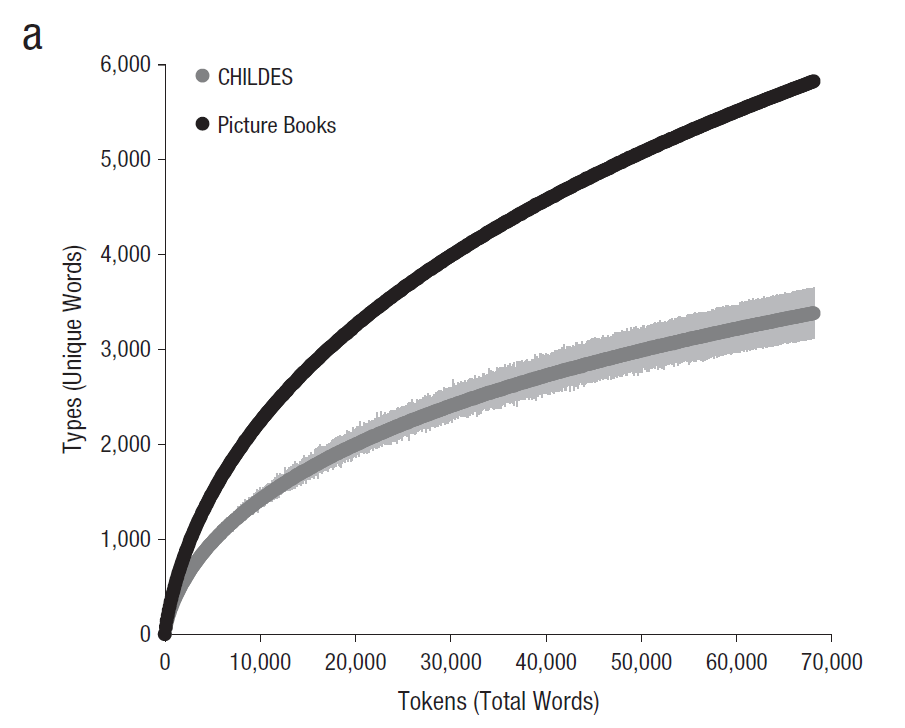
Intentionally focusing on oral language development will set your children up for success in all subject areas and writing. After all, so much of a student’s academic success is dependent on their ability to describe, explain and record their ideas and learning.
Did you like this post and want to read more? You can find out when more posts are published by entering your details below and clicking subscribe.

 Jocelyn Seamer Education
Jocelyn Seamer Education
0 comments
Leave a comment